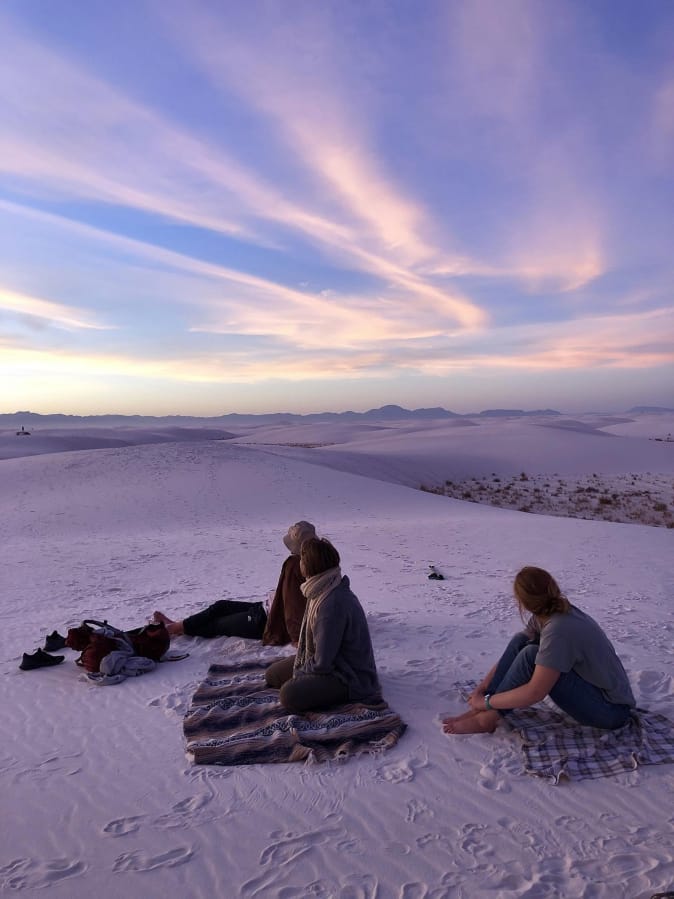WHITE SANDS NATIONAL PARK, N.M. — I didn’t expect to be hugged today, let alone three times. And by strangers. But that’s what happened after I snagged one of the 10 coveted campsites at White Sands National Monument last October, then offered to share it with some people who just missed the cut.
None of us knew that, weeks later, White Sands would become the country’s newest national park. Defense legislation signed Dec. 20 by President Donald Trump included a provision to turn this national monument into the 62nd national park, putting it among the likes of the Grand Canyon, Yosemite and Yellowstone.
But on this fall day in southern New Mexico, national park designations weren’t on any of our minds. What was: procuring a campsite. The simple gesture of sharing landed me three new besties: Meghan, a local seed collector preparing for graduate school, and Jules and Owen, artists from Austin, Texas. After their round of hugs, bracketed by heartfelt thanks, I jokingly note there is a catch to the deal. The trio must promise to rescue me if a tarantula comes creeping near my tent.
While I’m an experienced backcountry hiker, I was dismayed to learn tarantulas are abundant at White Sands. The large, furry spiders can’t kill you, but they’re ugly, their bite can be painful, and I know I’ll freak out if I spot one near my tent.



